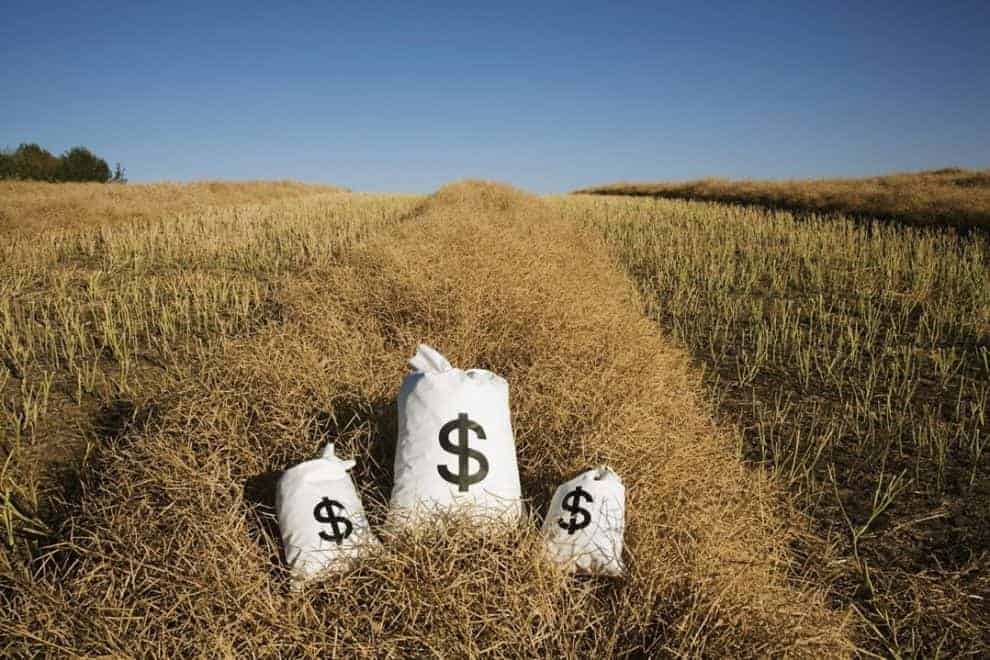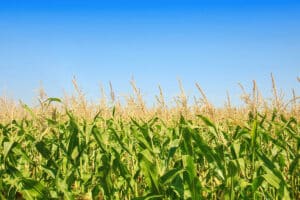According to the 1945 census there were 41,275 farms in the State of Maryland; 31,008, or approximately 77% of this number, were operated by owners. Land and buildings of all farms in the State were valued at approximately 335 million dollars, and an additional 42 million dollars was imputed to the farm machinery used in agricultural operations. Thus, at 1945 price levels, farm land, buildings and machinery in the State of Maryland were worth almost 400 million dollars. This is an average of more than $9,600 per farm. Since 1945 the rising level of farm real estate prices has undoubtedly increased the average value of Maryland farms to more than $10,000 and substantially raised the value of livestock. In addition to land and equipment, Maryland farmers owned almost 54 million dollars’ worth of livestock, an average of $1,300 per farm (Beal, G.M.; 1948, University of Maryland Extension Service).
Today’s financial markets and indicators are reported quarterly or even tracked by the minute as market actors follow investments and work to maximize profit. Farm markets also change daily as agricultural commodities and futures are traded but the agricultural story is one better told over the long term. Today, as commodity prices are leveling off and environmental regulations coupled with potential changes to national farm policy emerge, there seems to be much uncertainty about the agricultural industry which may challenge this long term success.
In contrast to these current trends in agricultural markets, a colleague recently shared with me the 1948 pamphlet quoted above from the Maryland Extension Service. This document is a stark contrast to the recent Wall Street Journal article about the EPA reducing the amount of ethanol required in gasoline under the current legislative mandate. Next to one another these articles demonstrate how the agricultural industry has slowly evolved in dynamic ways over the past sixty years.
The 2007 Agricultural Census measured Maryland agricultural land including related buildings at an estimated value of $14,432,211,000. That is a big number indeed. This value is estimated across approximately 13,000 farm operations recognized today in Maryland, which translates into an estimated value of $1.1M per farm operation.
In approximately sixty years the value of agricultural operations in Maryland has grown from $400 Million to $14.4 Billion. This means the working farm today is worth more than 35 times its estimated value of $9600 in 1948. This fact coupled with the consolidation of farm operations due to advancements in farm practices has developed a strong economic presence for the agricultural community in Maryland. The nearly 13,000 working farm operations in Maryland play a pivotal role in Maryland’s future. This fact is often not highlighted in main stream media and the underlying economic foundation agriculture provides to our region is not easily internalized by the public. In the context of sixty years agriculture has adapted and revolutionized itself several times over. This track record of success makes farming appear highly adaptive and capable of adjusting to almost any economic change. Across the world the agricultural industry has become more consolidated and the risk associated with input costs to farming weigh heavily on profit margins of new and old farming operations alike. These factors may make the industry more sensitive to sweeping change from environmental regulations or changes in national farm policy.
The importance of agriculture as an economic engine of Maryland is without argument as it contributes more than $2.1 billion to the state’s economy. Its contribution is paramount to the State’s future and any challenge to the farming industries’ economics should be done in a measured way and the outcomes must be documented and understood by all. There are a range of headwinds to agriculture in Maryland and while there is clearly a great foundation on which our agricultural heritage is built, the costs and benefits of environmental regulations or changes in national farm policy must be mindful of the businesses and families agriculture sustains. Agriculture has proven it is wise to take a long term outlook and while there are always ways to improve it may be best to take the long way home.
This content may not be used or reproduced in any manner whatsoever, in part or in whole, without written permission of LANDTHINK. Use of this content without permission is a violation of federal copyright law. The articles, posts, comments, opinions and information provided by LANDTHINK are for informational and research purposes only and DOES NOT substitute or coincide with the advice of an attorney, accountant, real estate broker or any other licensed real estate professional. LANDTHINK strongly advises visitors and readers to seek their own professional guidance and advice related to buying, investing in or selling real estate.










The problem with this is that farmland prices in Maryland for the past 15 years, at least, have been driven up by HBU considerations – development or second and/or retirement homes for the affluent. Agriculture is not viable in Maryland at today’s prices, with the exception of those farming generationally-owned properties. It is a beautiful place to live and yes, there is all kinds of “hobby farming” undertaken by those who do not rely on farm income to maintain themselves.